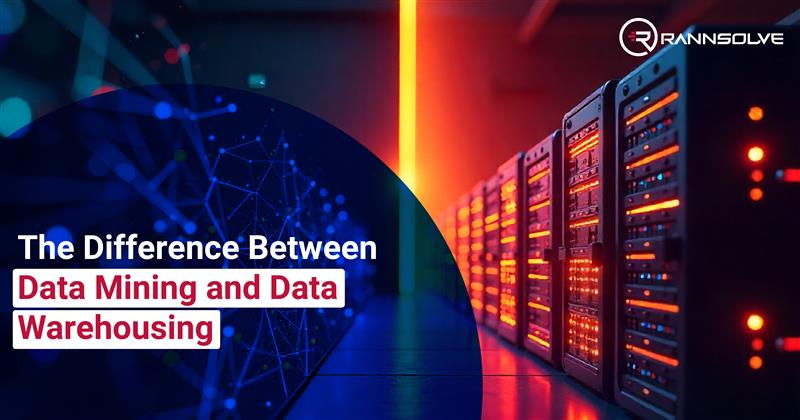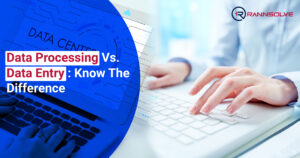If you’ve ever looked into how organizations make sense of the massive amounts of data they collect, you’ve probably come across the terms data mining and data warehousing. These two are often mentioned together, which might perhaps make you interpret their meaning interchangeably. They both play important roles in data analysis, but they aren’t the same thing. Understanding the difference matters whether you’re in business, tech, or just someone interested in how data drives decisions.
Let’s break them down and see where they differ, how they work, and how they actually complement each other.
What is Data Mining?
Data mining is the process of discovering patterns, trends, and relationships in large datasets. Imagine you’re digging through a mountain of data to find the few precious insights that actually matter. It’s all about making sense of it.
Data mining is typically done using a combination of statistical techniques, machine learning algorithms, and database systems. Businesses use data mining to predict customer behavior, identify potential fraud, improve marketing strategies, or even to recommend products to users.
A look at a few core aspects of what data mining involves:
- Pattern Recognition: This is one of the main goals! Finding repeated trends or behaviors in data. For example, noticing that customers who buy diapers often buy baby wipes as well.
- Predictive Analysis: Beyond just identifying what has happened, data mining can be used to predict what is likely to happen in the future. For example, forecasting customer churn based on historical usage patterns.
- Classification: This involves sorting data into predefined categories. A typical use case might be classifying emails into spam and non-spam.
- Clustering: Unlike classification, clustering groups data based on similarity without predefined labels. This is often used in market segmentation.
- Association Rule Mining: This looks at relationships between variables, often used in retail to find associations between products that are frequently purchased together.
What is Data Warehousing?
While data mining is focused on analyzing data, data warehousing is about storing it in a way that makes analysis possible in the very first place.
A data warehouse is essentially a centralized system that collects data from different sources, like customer databases, sales platforms, marketing tools, etc., and organizes it in one place. This makes it much easier to run reports, track metrics, and perform analysis.
The process behind building and maintaining a data warehouse typically involves engineers setting up Extract, Transform, Load (ETL) pipelines. This means they ‘Extract’ data from various systems, ‘Transform’ it into a clean, consistent format, and ‘Load’ it into the warehouse.
A quick peek into the key features of a data warehouse:
- Centralized Repository: It brings together data from different sources and stores it in one place, which helps maintain consistency and reduces duplication.
- Historical Data Storage: It stores not just current data but historical data too, making it possible to look back over time and analyze trends or changes.
- ETL Processes: ETL is at the core of warehousing. Without a solid ETL process, the data wouldn’t be reliable enough for analysis.
- Scalability: Warehouses are built to handle large volumes of data as organizations grow.
- Query and Reporting Tools: Most modern warehouses are optimized for querying and reporting, and they integrate with business intelligence tools for dashboards and visualizations.
Data Mining vs. Data Warehousing: The Big Comparison
Now that we’ve looked at both individually, let’s compare them side by side through a few key distinctions: analysis. mining company is the first step you should take.
1.Purpose
Data mining is about analyzing data to find patterns, insights, and trends.
Data warehousing is about storing and organizing data from various sources so it can be used for analysis.
2.Functionality
Data mining is an active process that interprets data.
Data warehousing is more passive as it manages and stores data for retrieval and reporting.
3.Data Source
Data mining works with existing datasets, often pulled from a data warehouse or other databases.
Data warehousing aggregates data from multiple sources into a centralized storage system.
4.Focus:
Data mining focuses on discovering useful information efficiently from datasets.
Data warehousing focuses on structuring data efficiently to make it easy to access and query.
5.Techniques Involved:
Data mining uses clustering, classification, predictive modeling, and association rules.
Data warehousing relies on ETL processes, data modeling, and database management.
6.Uses
Data mining is used in fraud detection, customer segmentation, market basket analysis, and trend forecasting.
Data warehousing supports reporting, dashboards, KPI tracking, and general business intelligence.
7.Data Concerns:
With data mining, the focus is on accuracy, quality, and interpretation of data patterns.
With data warehousing, the focus is on data consistency, integration, and performance.
8.Tools and Frameworks
Data mining often uses machine learning platforms and statistical tools like RapidMiner, Weka, KNIME, and others.
Data warehousing is built using SQL, ETL tools, and platforms like Amazon Redshift, Snowflake, or Teradata.
Understanding the distinction between data mining and data warehousing is important, especially in fields where data drives strategy. One helps you organize your data, and the other helps you extract meaning from it. And while they serve different purposes, they’re most powerful when used together.
If you’re trying to build a data-informed organization, partnering with a professional data warehousing and data mining company is the first step you should take.
Rannsolve, Your Data Mining Services Partner
With over 25 years of expertise in data management and more than 8 years of experience in AI-driven data digitization services, Rannsolve is a trusted provider of professional data mining solutions. Our AI-powered Cognitive Data Extractor (CDE) structures and extracts data from unstructured documents to provide you with actionable insights. We also help you extract valuable insights from complex datasets through our web data mining services. Contact us today!





